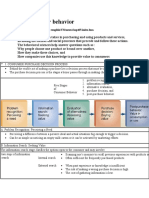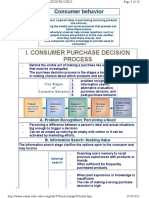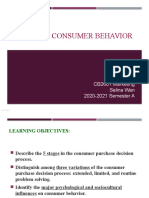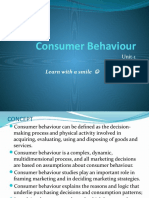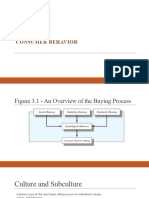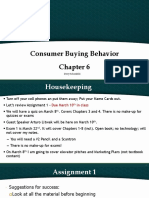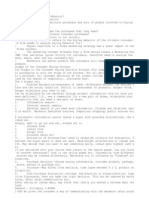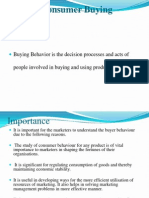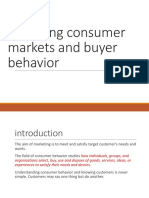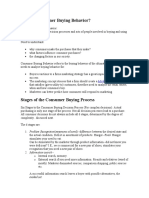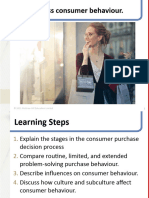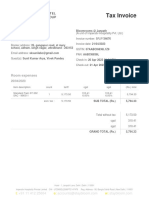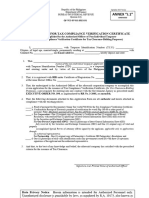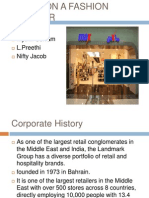0% found this document useful (0 votes)
213 views11 pagesFive Stages of Consumer Behavior: A. Problem Recognition: Perceiving A Need
Consumer behavior can be summarized in 3 stages:
1) Problem recognition - noticing a need or being triggered by marketing to perceive a need.
2) Information search - seeking information internally from memory or externally from sources like friends, reviews or advertising to evaluate options.
3) Purchase decision - deciding from whom and when to buy based on evaluation of alternatives and factors like price, experience and atmosphere.
Uploaded by
Nishal ShahCopyright
© Attribution Non-Commercial (BY-NC)
We take content rights seriously. If you suspect this is your content, claim it here.
Available Formats
Download as DOCX, PDF, TXT or read online on Scribd
0% found this document useful (0 votes)
213 views11 pagesFive Stages of Consumer Behavior: A. Problem Recognition: Perceiving A Need
Consumer behavior can be summarized in 3 stages:
1) Problem recognition - noticing a need or being triggered by marketing to perceive a need.
2) Information search - seeking information internally from memory or externally from sources like friends, reviews or advertising to evaluate options.
3) Purchase decision - deciding from whom and when to buy based on evaluation of alternatives and factors like price, experience and atmosphere.
Uploaded by
Nishal ShahCopyright
© Attribution Non-Commercial (BY-NC)
We take content rights seriously. If you suspect this is your content, claim it here.
Available Formats
Download as DOCX, PDF, TXT or read online on Scribd
/ 11
